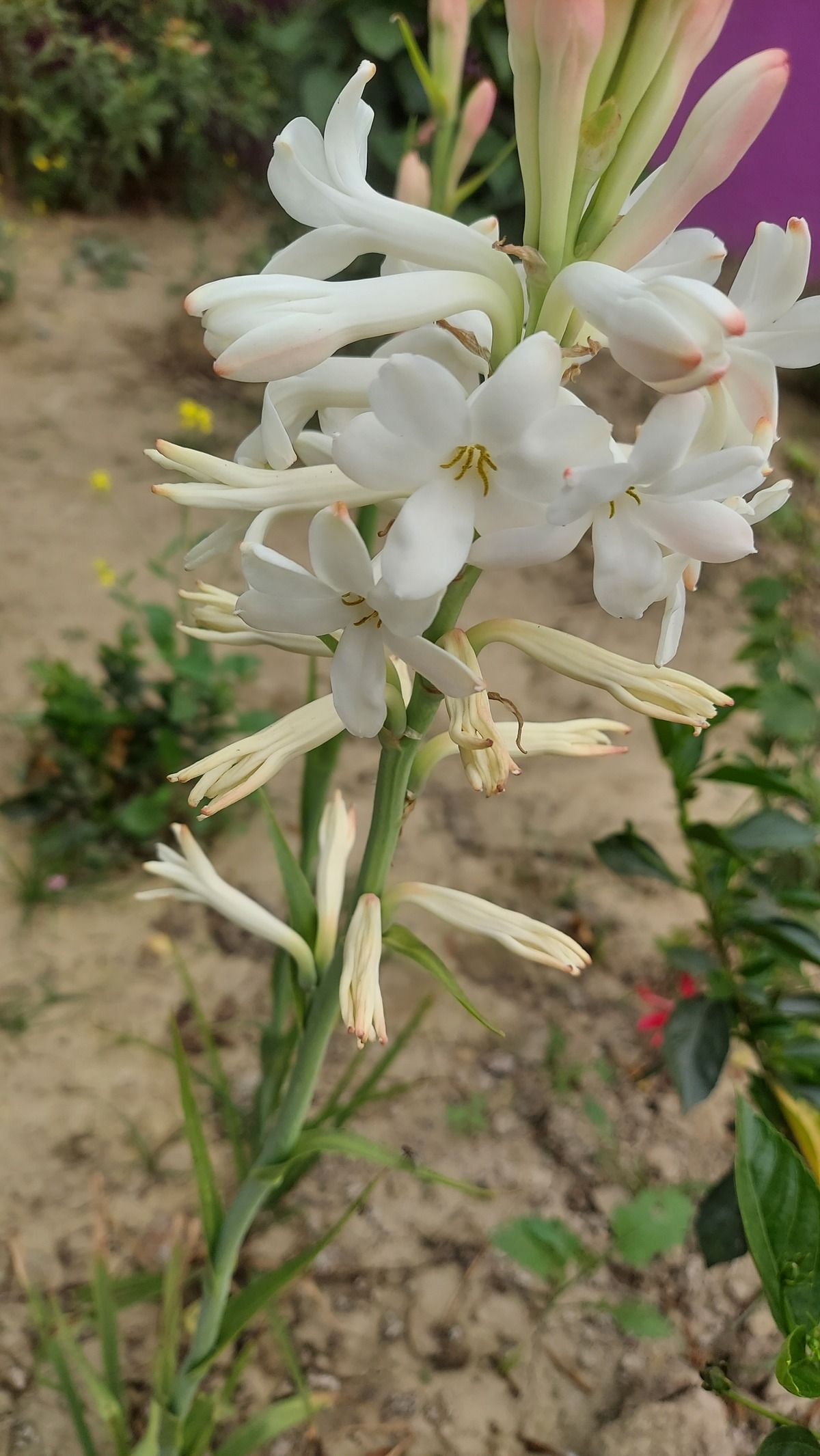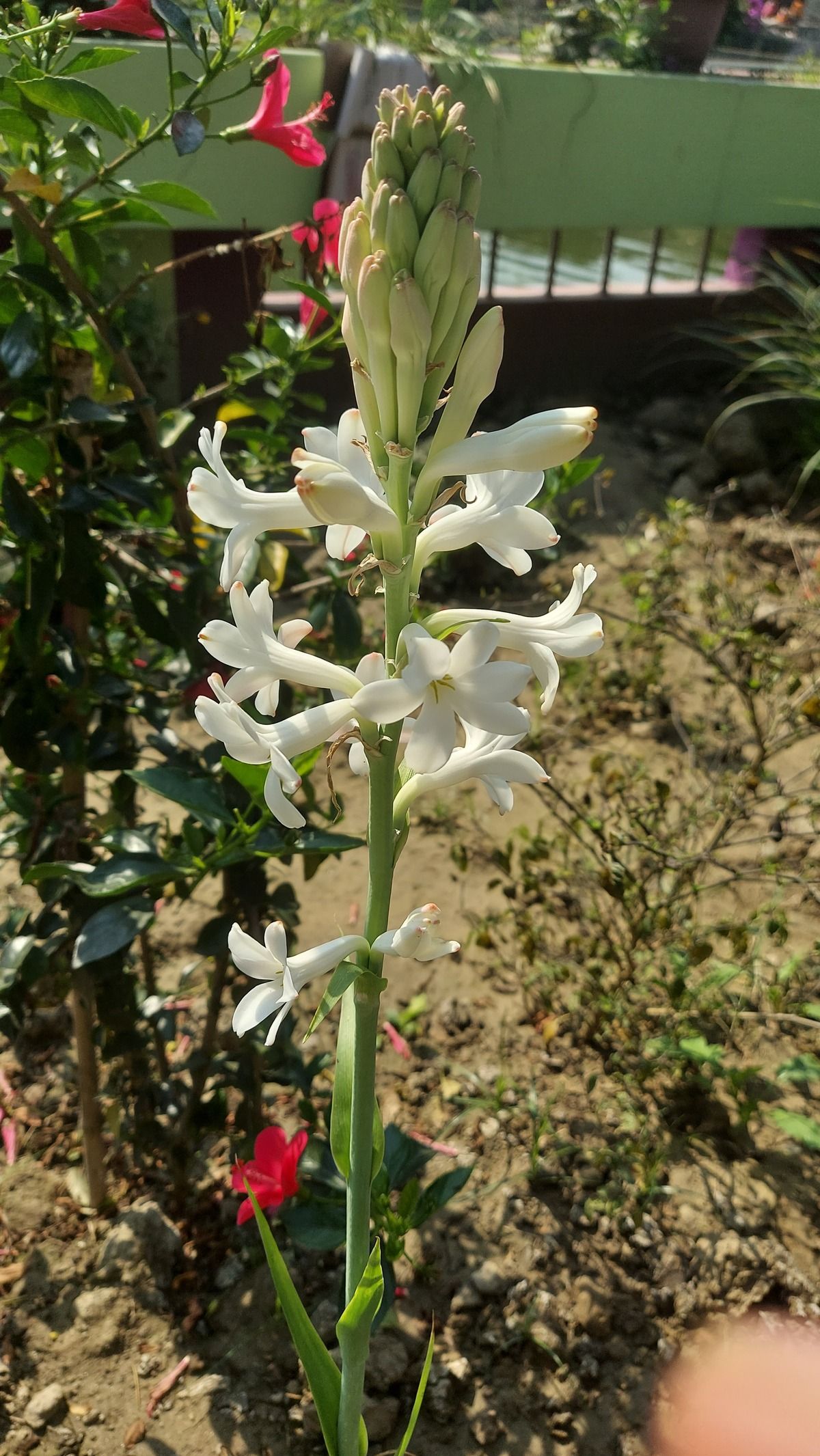
If you're passionate about gardening and love sweet, floral fragrances, Tuberose is a must-have for your garden. Known for its strong, captivating scent, this flower features beautiful, large white blooms that cluster on tall stalks, reaching up to four feet.
Tuberose is a favorite among florists, especially for weddings and special occasions. Originally from Mexico, it grows best in warm climates. But you can also grow it in cooler areas if planted in sunny spots. This guide will walk you through everything you need to know to grow Tuberose successfully in your home garden.
Optimal Planting Locations
Choosing the location for planting tuberose is important. So let me tell you a bit about the appropriate location to place this plant.
Tuberose bulbs require a location with well-drained soil and it should be able to get full sunlight throughout the day. Although light shade may be beneficial in extremely hot and dry areas. If water tends to pool in the planting area for hours after rainfall, consider choosing a different location or improving drainage by incorporating organic matter to elevate the soil by two to three inches. These plants are relatively low maintenance but cannot survive in soggy conditions. So you have to keep these things in mind.
Also read: Protection for Tuberose: Managing Pests and Diseases
Planting Time for Tuberose
The ideal time to plant Tuberose bulbs is in the early spring, once the risk of frost has passed and daytime temperatures consistently exceed 70 degrees Fahrenheit. Typically, Tuberose will flower from mid to late summer, approximately 90 to 120 days post-planting.

Planting Instructions
Outdoor Planting:
Choose a sunny spot with well-draining soil. Plant the bulbs 8 to 10 inches apart, covering them with 2 to 3 inches of soil.
Container Planting:
Use high-quality, well-draining potting mix in containers with proper drainage holes. Space the bulbs 8 to 10 inches apart, ensuring they are covered with 2 to 3 inches of soil. Water thoroughly to settle the soil around the bulbs.
Care and Maintenance
Tuberose needs some care and maintenance to maximize the flowering. Now let me discuss about it.
You have to water the plants regularly during their growth phase, aiming for 1 to 1.5 inches of water weekly, especially in the absence of rain.
Feed your Tuberose monthly with a balanced fertilizer, such as an 8-8-8 formula, during the active growing season. After the blooming period, leave the foliage to allow photosynthesis to strengthen the bulbs for the next cycle.
Once the leaves yellow and retreat, remove them. Allow the plants to enter dormancy for a few months before the next growing season.
You may also need to deal with pests and diseases, so I recommend you read this post - Protection for Tuberose: Managing Pests and Diseases. I am not talking much about pests and disease control in this article as you can go to that article and learn about it.
Expert Tips for Tuberose Success
Below are some expert tips for cultivating and growing tuberose professionally:
- Tuberose are heavy feeders; remember to fertilize regularly.
- Improve soil drainage and plant health by amending with ground bark, decomposed manure, or compost.
- Bulbs typically arrive as large clumps, containing multiple bulbs each.
- Ensure containers have sufficient drainage to prevent waterlogged soil.
- In colder climates (zone 8 and below), dig up and dry the bulbs after the first frost, then store in a cool, dry place for replanting next year.
- Cutting stems for bouquets during bloom time is encouraged; it promotes further flowering.
- Opt for weekly deep watering sessions rather than daily light watering to encourage deeper root growth and plant health.


